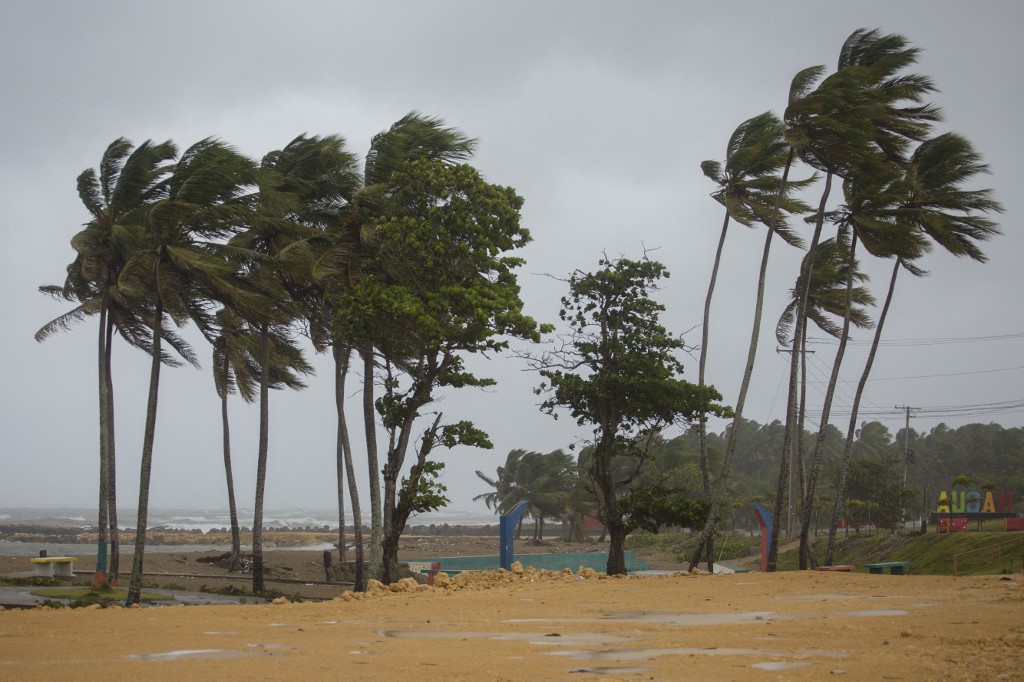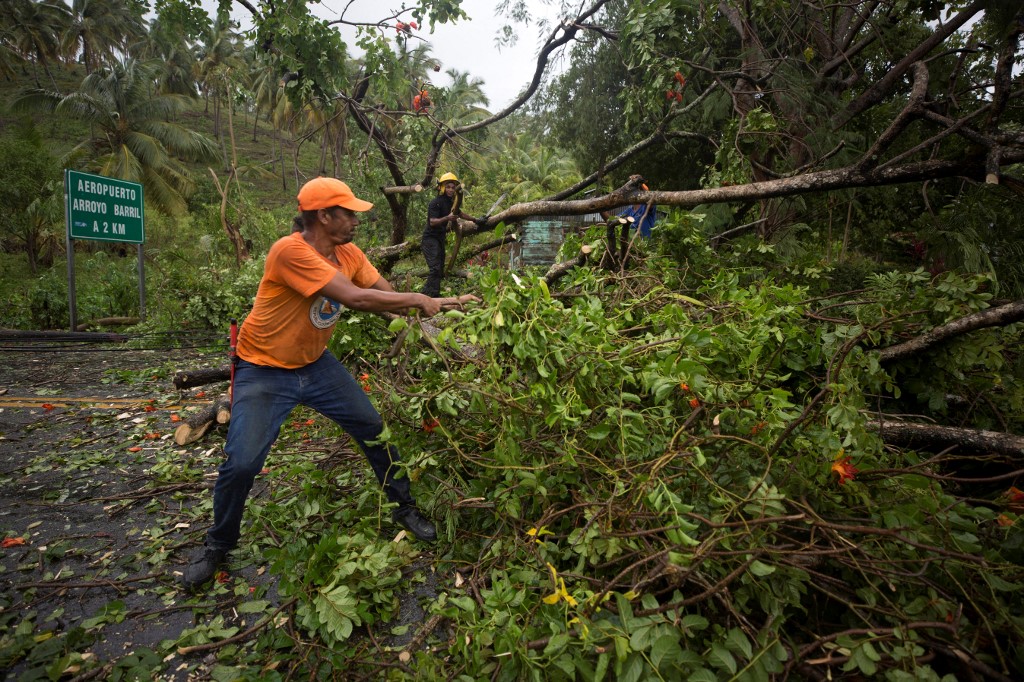
by Erika Santelices
Agence France-Presse
NAGUA, Dominican Republic (AFP) — Hurricane Fiona dumped torrential rain on the Dominican Republic and left one person there dead on Monday after triggering major flooding in Puerto Rico and widespread power blackouts across both Caribbean islands.
The storm strengthened to a Category Two hurricane late Monday, said the US National Hurricane Center (NHC), which forecast continuing rains and possible new catastrophic floods during the night in both Puerto Rico and the eastern Dominican Republic.
Red alerts were in effect in seven of the island’s 32 provinces — down from 18 earlier in the day — with more than 12,000 people sheltering in safe areas, according to emergency services.
One man died in the storm while cutting down a tree in his home as a precautionary measure, authorities said, without giving further details.
Several roads were flooded or cut off by falling trees or electric poles around the Dominican resort of Punta Cana where the electricity was knocked out, an AFP journalist on the scene said.
President Luis Abinader declared three eastern provinces to be disaster zones: La Altagracia — home to Punta Cana — El Seibo and Hato Mayor.
Footage from local media showed residents of the east coast town of Higuey waist-deep in water, trying to salvage personal belongings.
“It came through at high speed,” Vicente Lopez, in the Punta Cana beach of Bibijagua told AFP, bemoaning the destroyed businesses in the area.
Fiona was packing maximum sustained winds of 100 miles per hour (155 kilometers per hour), according to the NHC, which expected it to strengthen Tuesday to a Category Three storm — making it this season’s first major Atlantic hurricane.
After passing close to Turks and Caicos late Monday or early Tuesday, the storm is expected to track north later in the week, out into the ocean — although it could come perilously close to tiny Bermuda.
In Puerto Rico — where the rain was still beating down — US President Joe Biden has declared a state of emergency, authorizing the Federal Emergency Management Agency to provide assistance.

— ‘They were crying’ —
Governor Pedro Pierluisi said the storm had caused catastrophic damage since Sunday, with some areas facing more than 30 inches (76 centimeters) of rainfall.
On Monday afternoon, Nelly Marrero made her way back to her home in Toa Baja, in the north of the US island territory, to clear out the mud that surged inside after she evacuated a day earlier.
“Thanks to God, I have food and water,” Marrero — who lost everything when Hurricane Maria devastated Puerto Rico five years ago — told AFP by telephone.
Hearing the flood alert ring out, Marrero headed out into the rain with her daughter and three infant grandchildren, seeking refuge at a relative’s house.
“It was very difficult with the babies — they were crying, they didn’t understand what was going on,” she said.
Across Puerto Rico, Fiona caused landslides, blocked roads and toppled trees, power lines and bridges, Pierluisi said.
A man was killed as an indirect result of the power blackout — burned to death while trying to fill his generator, according to authorities.
The governor said Fiona had caused “unprecedented” flooding and that more rain was expected “throughout the island today and tomorrow”.
Most of Puerto Rico, an island of three million people, was without power, but electricity had been restored for about 100,000 customers on Monday, the governor said.
The hurricane has also left around 800,000 people without drinking water as a result of power outages and flooded rivers, officials said.
“We are without electricity and water,” Elena Santiago, an anesthesiologists at the Mennonite hospital in Aibonito told AFP.
“The hospital is operating with a generator. Only emergencies are being attended to.
– Blackout problems –
Fiona made landfall in Puerto Rico as a Category One hurricane, at the lowest end of the five-tier Saffir-Simpson scale.
Before that, the storm had caused one fatality in the French overseas department of Guadeloupe, when Fiona was still classified as a tropical storm.
After years of financial woes and recession, Puerto Rico in 2017 declared the largest bankruptcy ever by a local US administration.
Later that year, the double hit from two Hurricanes, Irma and Maria, added to the misery, devastating the electrical grid on the island — which has suffered from major infrastructure problems for years.
The grid was privatized in June 2021 in an effort to resolve the problem of blackouts, but the issue has persisted, and the entire island lost power earlier this year.
© Agence France-Presse







